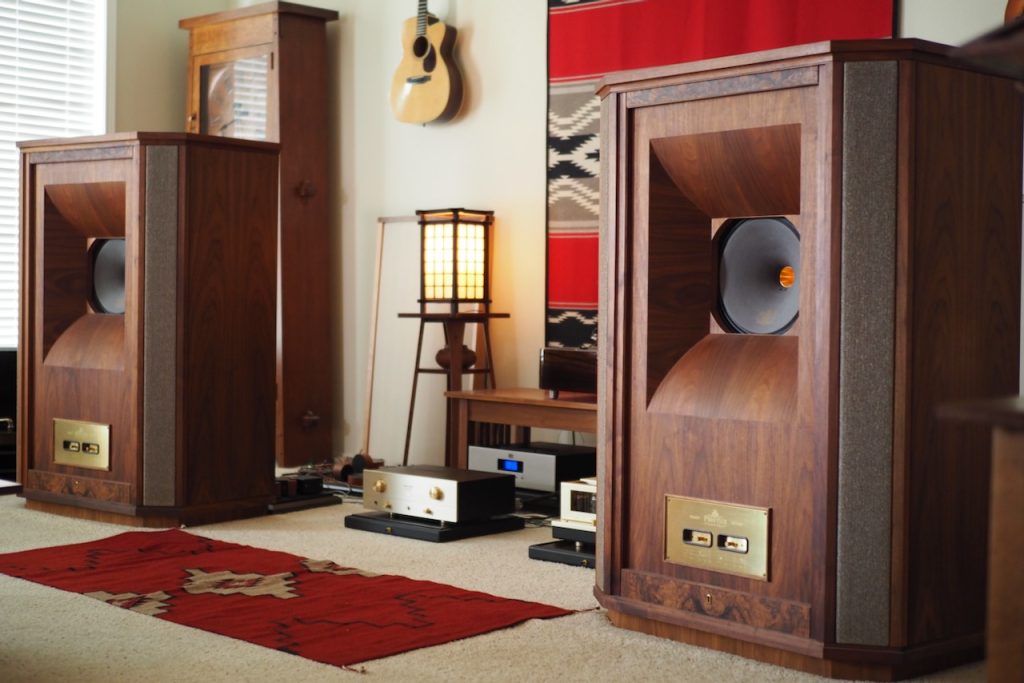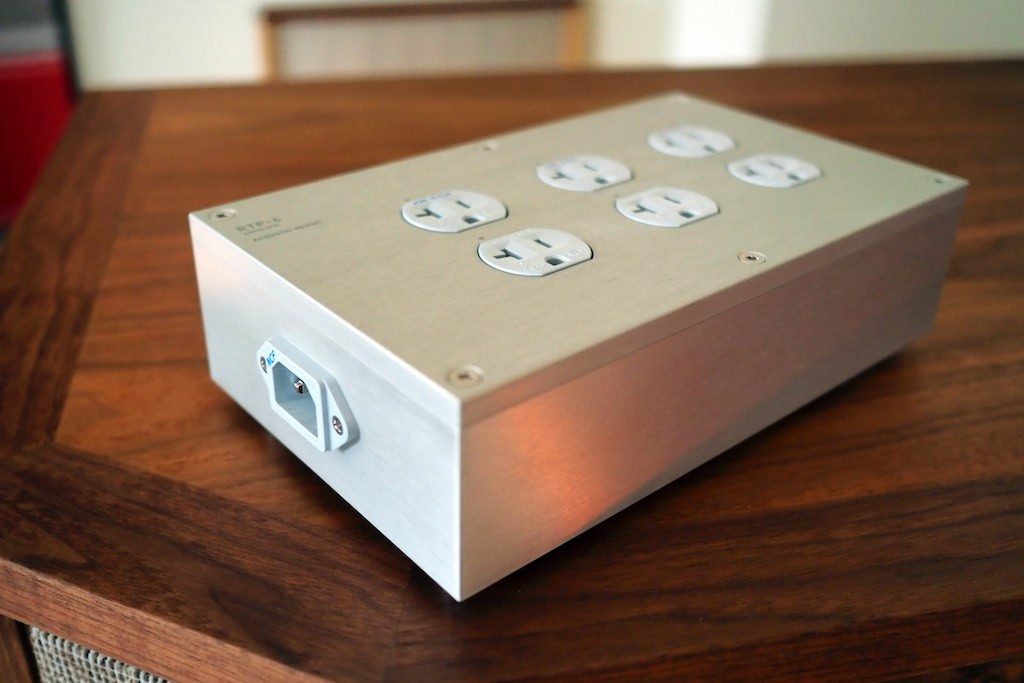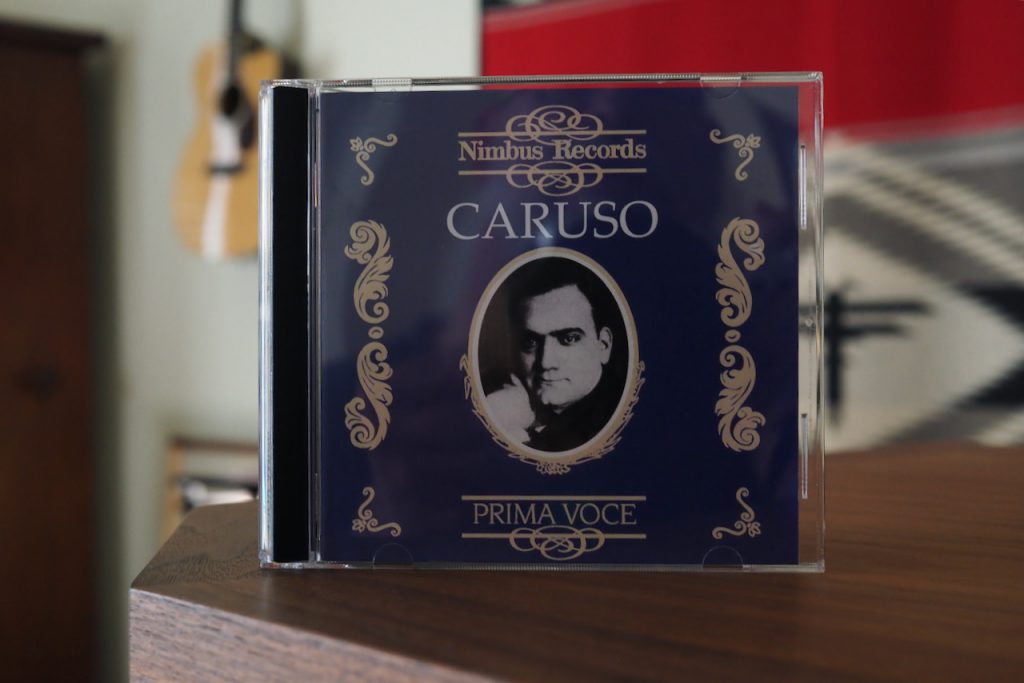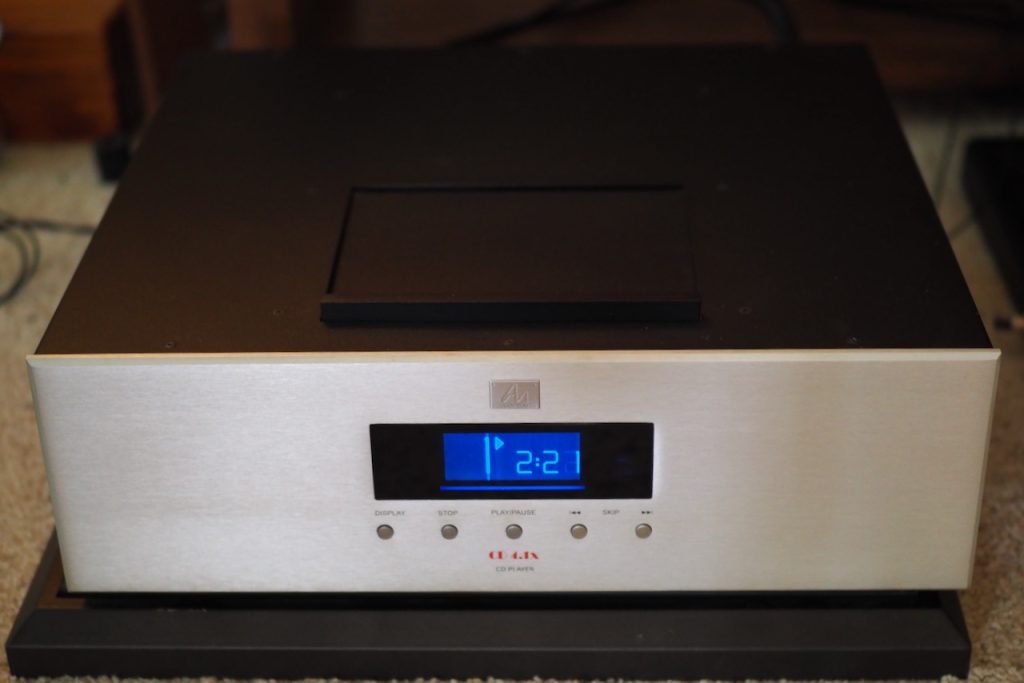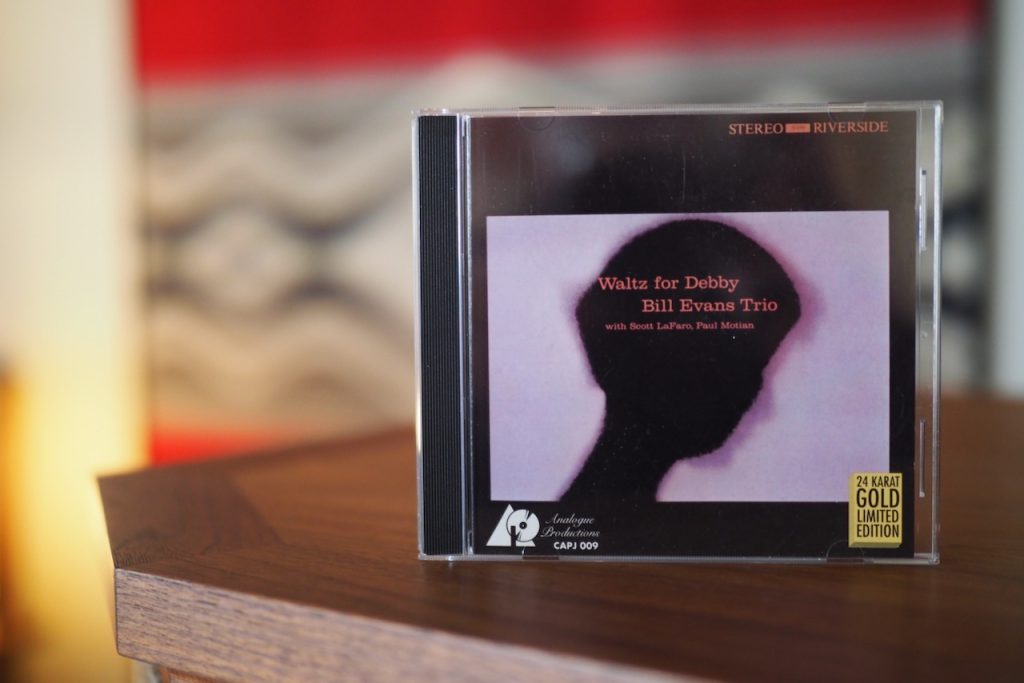The Mactone XX-440 preamp and MH-120 amp that Steve Mishoe (In Living Stereo) sent to me were well run-in prior to their arrival, so I had the luxury of not having to do the run-in of them myself.
Just a few days of playing music with the Mactone components was all that was needed on my part to get them settled into my audio system.
My system setup during my initial listening sessions was as follows:
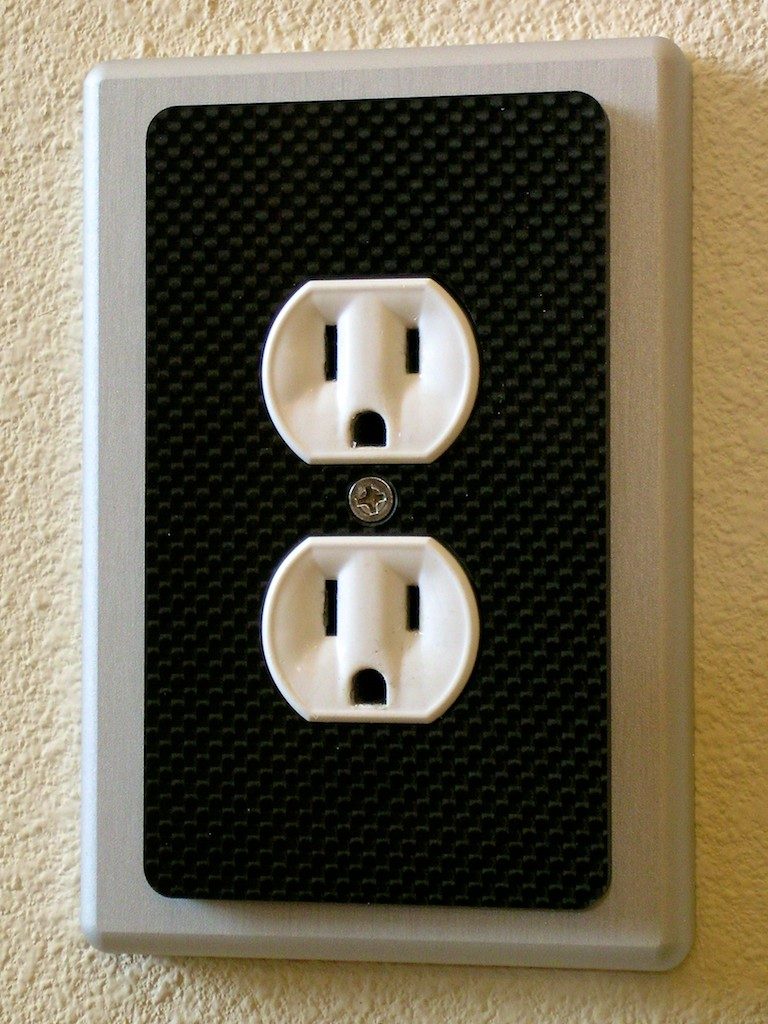
Acoustic Revive CB-1DB receptacle base plate, CFRP-1F carbon fiber outlet plate, Acoustic Revive modified Oyaide R-1 receptacle.
Wall outlet: Acoustic Revive CB-1DB receptacle base plate, CFRP-1F carbon fiber outlet plate, and an Acoustic Revive modified Oyaide R-1 receptacle.
Wall outlet to power distributor: Acoustic Revive Absolute power cable from wall outlet to Acoustic Revive RPT-6 Absolute NCF power distributor.
Power distributor to components: Acoustic Revive Power Reference TripleC NCF AC power cable to Audio Note CD 4.1X CD player, Acoustic Revive Power Reference TripleC NCF AC power cable to Mactone XX-440 preamp, and an Acoustic Revive Absolute power cable to the Mactone MH-120 amplifier.
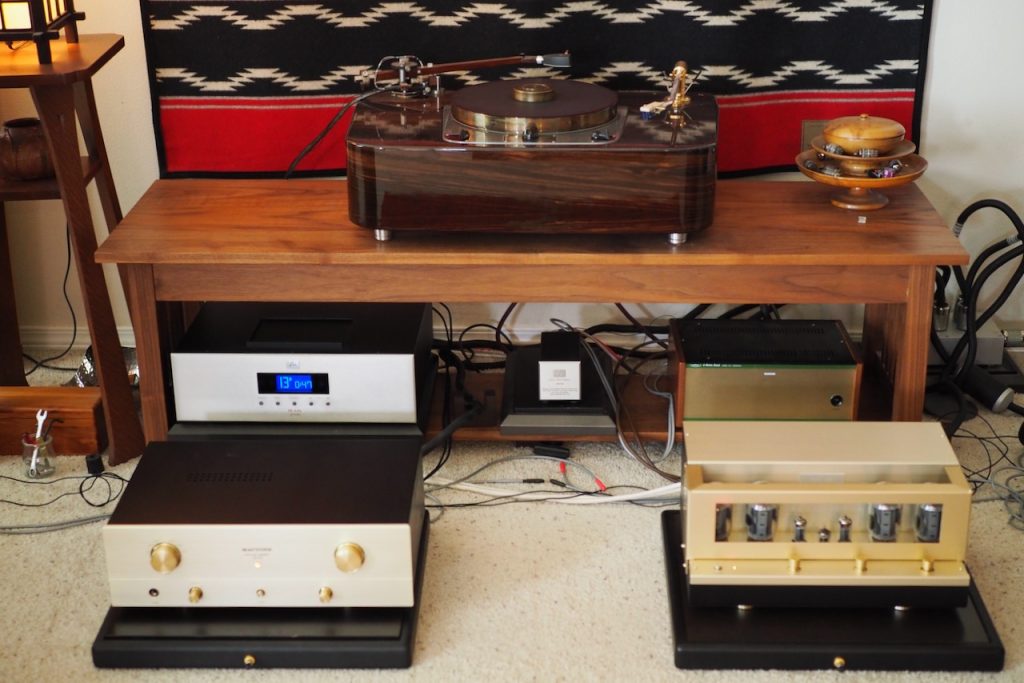
Audio Note CD 4.1X CD player (rear left), Mactone XX-440 preamp (front left), and Mactone MH-120 amp (front right).
Interconnects and speaker cables: Duelund 'Dual' DCA16GA tinned-copper interconnects from the Audio Note CD 4.1X CD player to the Mactone XX-440 preamp, and Duelund DCA16GA interconnects from the Mactone XX-440 preamp to the Mactone MH-120 amp. Duelund DCA16GA speaker cables from the Mactone MH-120 amp to the custom Duelund CAST crossovers of my Tannoy Westminster Royal SE loudspeakers.
Miscellaneous accessories: The Mactone XX-440 preamp and Mactone MH-120 amp are sitting upon Acoustic Revive RAF-48 air isolation platforms, and the Audio Note CD 4.1X CD player is sitting upon an Acoustic Revive TB-38 quartz isolation platform.
I haven't connected my turntable yet with the Mactone components, so I will report on the analogue side of life in a future listening impressions article.
What I Listen For
One of the things I've been considering a lot more lately is my listening paradigm. It's changed quite a lot over time, and will likely to continue to change as I refine my perceptions on the topic.
The end result of listening to music for me is, of course, "Do I enjoy what I'm hearing?"
If you read my recent What Is High-Fidelity? article, where I muse about the nature of high-fidelity in recording and audio playback, you know I am in the midst of reconsidering what I find to be important in high-fidelity audio playback.
In the chart above I took a first stab at outlining my current listening paradigm for you. It'll undoubtedly change over time, but this will serve as a starting point for discussion.
Recording engineers have been recording musical performances now for approximately 146 years. The albums of Planet Earth's recorded music canon span the acoustic era of recording (1877 to 1925), the electric era of recording (1925 to 1945), the monaural period of the magnetic era of recording (1945 to 1957), the stereo period of the magnetic era of recording (1957 to 1975), and finally the digital era of recording (1975 to today).
One of the things that I have been immensely enjoying over the last three or four years is listening to the great musical performances recorded during all of those recording eras.
I've come to consider albums from the different recording eras as individual works of art that are the result of a collaboration between the musicians playing a given performance, and the recording engineers who shape the recording of those musical performances into the albums we enjoy listening to.
The recording quality and fidelity varies quite a lot over the span of the recording eras, and within each era as well.
I have been listening to a lot of recordings from earlier eras that range in recording quality from low-fidelity to high-fidelity, so one of my most important listening considerations has become how well an audio component or audio system turns all of those recordings into an enjoyable music listening experience.
It's become important for me, for example, to be able to play a low-fidelity recording from the acoustic era of recording and have it sound musically accessible and enjoyable, while still delivering the high level of emotional impact those recordings are known for.
As some of you know, those old acoustic and electric era 78rpm direct to disc recordings can sound amazing, and they do some things better even than later recordings from the magnetic and digital recording eras in terms of immediacy and presence.
What they don't have is the extended bandwidth of later recording eras, they are monaural, and they can have some 78 record surface noise, but the great musical performances they document are so important that their lower overall fidelity is completely forgivable.
I happen to find those lower fidelity attributes of early recording eras somewhat charming, and I enjoy hearing the sort of endearing authenticity of the recording era they convey.
It's also important for me to be able listen to high-fidelity recordings, say from the stereo period of the magnetic recording era, and have them played back at their considerable best.
Over the range of low-fidelity to high-fidelity recordings, I also want to hear an 'honest' portrayal of the recording attributes of a given recording era. When I listen to an acoustic era recording, I want to hear those vintage recording qualities at their most accessible best. I want to hear the audiophile fave recordings at their considerable best as well. I want it all!
Then there's that huge distinction between playing back the great musical performances with their rather amazing full emotional impact, in music lover fashion, and listening to the best stereo recordings with all their encoded illusions of soundstage and imaging attributes that we audiophiles enjoy hearing.
Simply speaking, and borrowing from the idea of the text of the album cover for Everybody Digs Bill Evans, I want my audio components and systems to play every album I want to listen to in a way that fully expresses its originality and style of recording, and to sound and feel like I am hearing that album at its definitive best.
That's a tall order, but the very best audio components and systems can do all those things very well.
I've used the Audio Note (UK) CD 4.1x CD player as the source for these listening impressions. I'm a huge fan of the CD 4.1x, for its superb sound quality and musicality, which approaches good LP playback.
Plus, even more importantly to me, the CD 4.1x opens up listening to albums from all the eras of the recording arts without having to worry about having dedicated sources set up that provide access to the many different EQ curves used in early recordings, optimizing playback speed, cartridge choices, etc., that would normally be required to play albums from the acoustic, electric, and magnetic eras of recording.
All of that is done for us during the digital transfer process from those early recordings, and there's a huge amount of albums of early recordings available on CD these days, so with a good CD player like the CD 4.1x there's no limit to exploring the abundance of riches in our recorded music canon.
What I'm hearing from the Mactone XX-440 preamp and Mactone MH-120 amp
I've been extremely impressed with how well the Mactone XX-440 preamp and Mactone MH-120 amp are able to play back recordings in maximum fidelity from the span of the recording eras, and there are few amplification components in my experience that can match the recording era playback versatility the Mactone XX-440 preamp and MH-120 amp delivers.
While listening to the Nimbus Records Prima Voce Volume 1 of Caruso performances from the acoustic era of the recordings arts with the Mactone XX-440 preamp and MH-120 amp, I was impressed by the beautiful tonal presentation of the music, the remarkable dynamic response 78rpm recordings are capable of, their "living presence" vividness, and the impressive emotional impact of Caruso's performances.
It's readily apparent with the Mactone components that the source albums were acoustic era 78rpm recordings. I want to hear the signature nature of those early recording methods clearly articulated in terms of bandwidth, noise floor, dynamics, etc., while still making them comfortably accessible and enjoyable musically, which the Mactone components really excel at.
I find it remarkable how good those early acoustic era recordings were, and how impressive they can be when played back over a contemporary audio system like the one I'm listening to right now.
This is sort of a perverse audiophile-like comment, which is particularly out of place given these Caruso performances are from monaural acoustic era 78rpm recordings, but I could hear excellent imaging, with a distinct layering of images in the depth dimension of the soundstage, a nice reverberant sense of the recording venue, and ravishingly beautiful tonality.
There's a lot more 'there' there to hear in these early recordings than you might imagine. I dig it!
I get a sort of a time-travel feeling listening to these early transfers, where I'm transported into the past to experience this music with an authentic intensity of feeling and fidelity for the period.
I find those lower fidelity attributes of early recording eras presented as charming rather than distracting through the Mactone XX-440 pre & MH-120 amp, and I enjoy hearing the authenticity of the recording era they convey.
While listening I imagined what it might have been like for my grandparents to listen to this music on a gramophone during the early 1900s, but they would never have been able to hear this music with the impressive level of sound quality and musicality that I'm hearing from with this particular audio system.
Kudos to Mactone for their important contribution to making that experience a possibility.
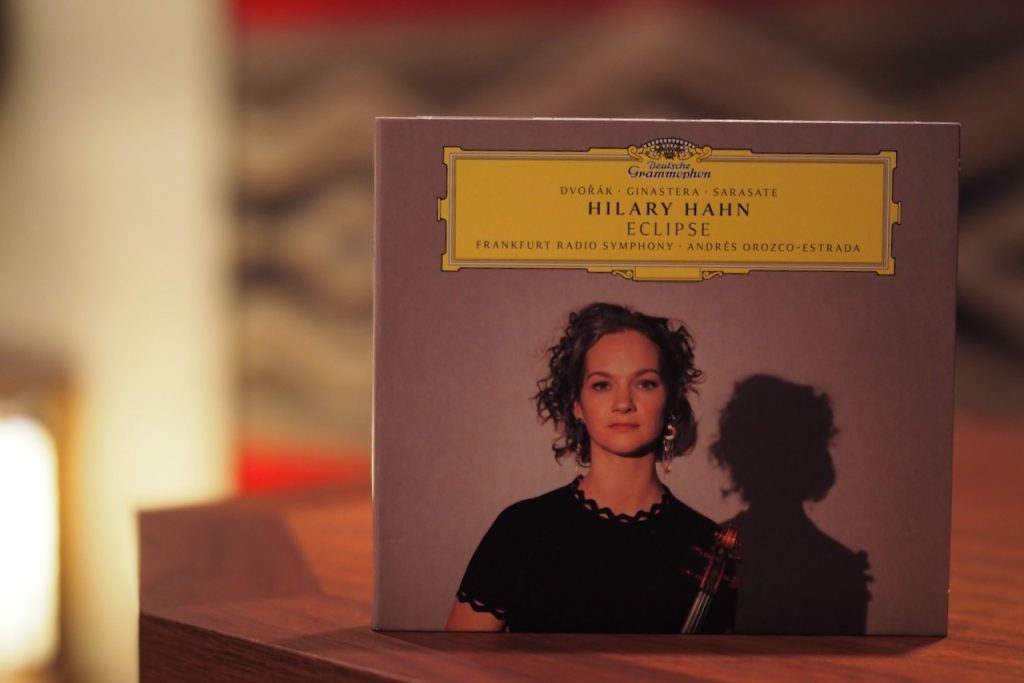
Hilary Hahn's new album 'Eclipse', with the Frankfurt Radio Symphony, and Music Director Andres Orozco-Estrada.
Fellow hi-fi enthusiast Mike Rubey shared with me how much he liked Hilary Hahn's new album 'Eclipse':
"If you don’t have it yet get yourself a copy of Hilary Hahn’s latest album Eclipse. It has the Ginastera Violin Concerto on it. I’m not sure anyone else can even play it. Utterly completely mind blowing."
At Mike's recommendation I bought a copy of the CD from Amazon, and have been listening to it a lot lately. It's impressive album of great music, and was recorded with excellent sound quality.
I don't know if Eclipse was recorded in analogue or digital, but it sounds great in my system with the Mactone kit. Eclipse was recorded "live" in the concert hall, but without an audience being present because of the Covid pandemic.
Bonus: Here's a LINK to the YouTube video so you can see Hilary playing the Dvořák violin concerto during the recording session, which I believe you'll enjoy.
There's a lot that has been written by music reviewers about Hilary and Eclipse, with universal praise for Hilary's playing, as well as for the "live performance" sound quality of the recording. If you get a chance, search on music reviews of this album, and for interviews with Hilary. There's lots of good material to read for the standout performances of Eclipse.
Audiophiles will also appreciate the wide soundstage of Eclipse, the excellent imaging, impressive dynamics, and superb tonality that the Mactone components bring to the playback.
I should also mention that the Mactone MH-120 amp's 65 watts of output power really adds a luxurious aspect to dynamics with my sensitive Tannoy Westminster Royal SE loudspeakers, with it following both the micro and macro dynamic flow of the music with ease.
As Steve Mishoe mentioned to me, the Mactone MH-120 amp has a 3 position presence knob. "The far left setting is flat and offers the best detail, the middle setting has slightly less bass for more excitable rooms and the third setting has an attenuated treble for brighter rooms."
I've often thought that audio companies dropped the ball when they eliminated equalization from their designs, as equalization can be very handy for optimizing playback of recordings.
I was really intrigued by Mactone's inclusion of a simple equalization knob on the MH-120 amp. I've tried using it a little differently than Steve describes for room issues, as my room is pretty well sorted out, so no need on that front.
Recordings can vary all over the place in how well they are balanced across the bands that make up the audio spectrum, and the Teach Me Audio website has an excellent discussion of how altering each of the seven frequency bands of the audio spectrum can change the overall sound of the recorded music.
What I've found is that the MH-120 amp's presence knob works really well for bringing sound quality back in balance where things are a little out of whack.
For example, if the presence or brilliance bands of recordings are goosed up like they are in some albums marketed to audiophiles, setting the MH-120 amp's presence knob to the far right setting that attenuates treble slightly really helps calm down albums that have been boosted too much in those bands.
The Bill Evans Trio's Waltz for Debby album is a favorite of jazz music lovers and audiophiles alike.
However, the bass can sound a little overblown on Waltz for Debby at times, so as an experiment I set the MH-120 amp's presence knob to the middle position, which attenuates bass slightly. The result was an immediate improvement in the overall balance of the bass on the album. I was impressed with how well it worked for Waltz for Debby.
For most well-balanced albums, I've found the far left "flat" position of the presence knob to be a good choice.
I really like that Mactone included a presence knob on the MH-120 amp, as it can make a positive difference when listening to albums where the frequency bands are a little out of whack in the high or low frequencies.
Ok, time to wrap up my initial listening impressions.
The Mactone XX-440 preamp and MH-120 amp combination has one of those 'experience the joy of music' ways of presenting recordings.
The Mactone components have a beautiful overall tonality, being naturally warm, rich, and refined sounding. The Mactone components also possess excellent imaging and soundstage ability if the recorded music contains that information.
The Mactone components also have the ability to play recordings across the span of the eras of the recording arts, low-fidelity to high-fidelity, and deliver accessible and involving musical performances to the listener.
That versatility in performance is aided by the MH-120 amp's presence knob, which can moderate bass & treble issues of recordings when they are present.
I must say I'm impressed, and I've really been enjoying listening to music through the Mactone XX-440 preamp and MH-120 amp combination in my audio system.
Ok, that's all for now, but there will be more to come about these Mactone components.
As always, thanks for stopping by, and may the tone be with you!
You can read the next article in the Mactone series HERE.






